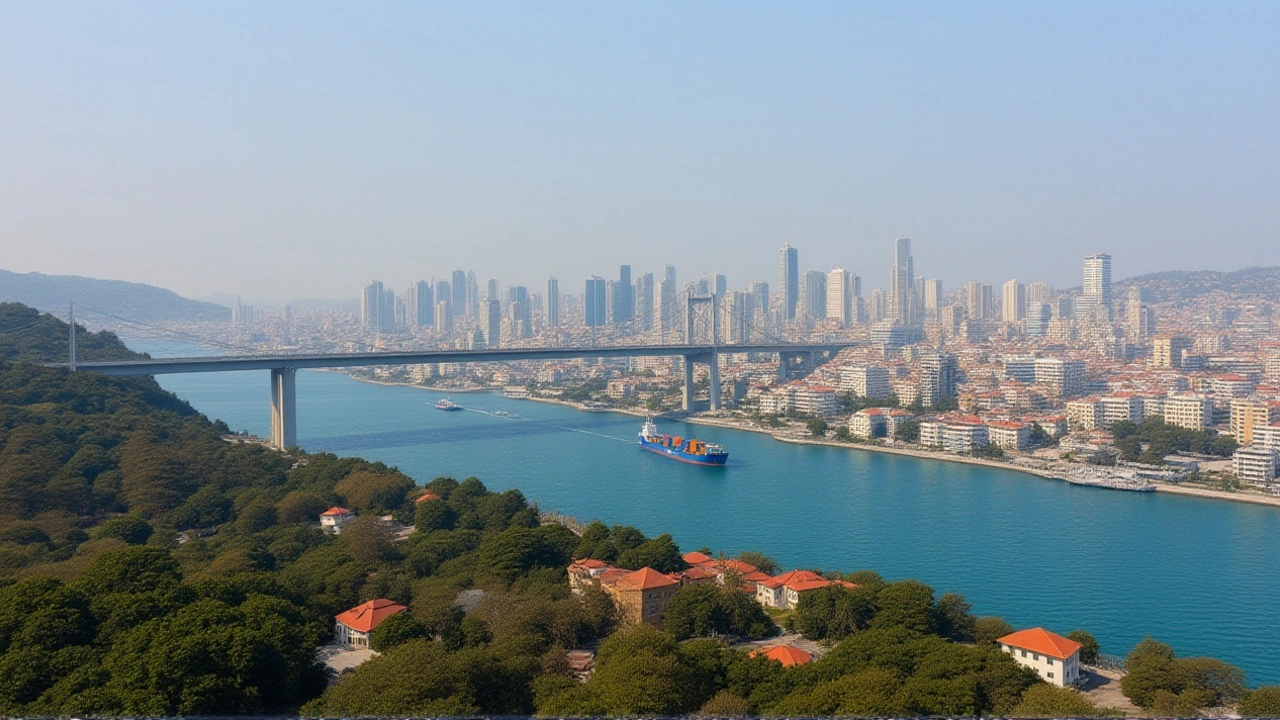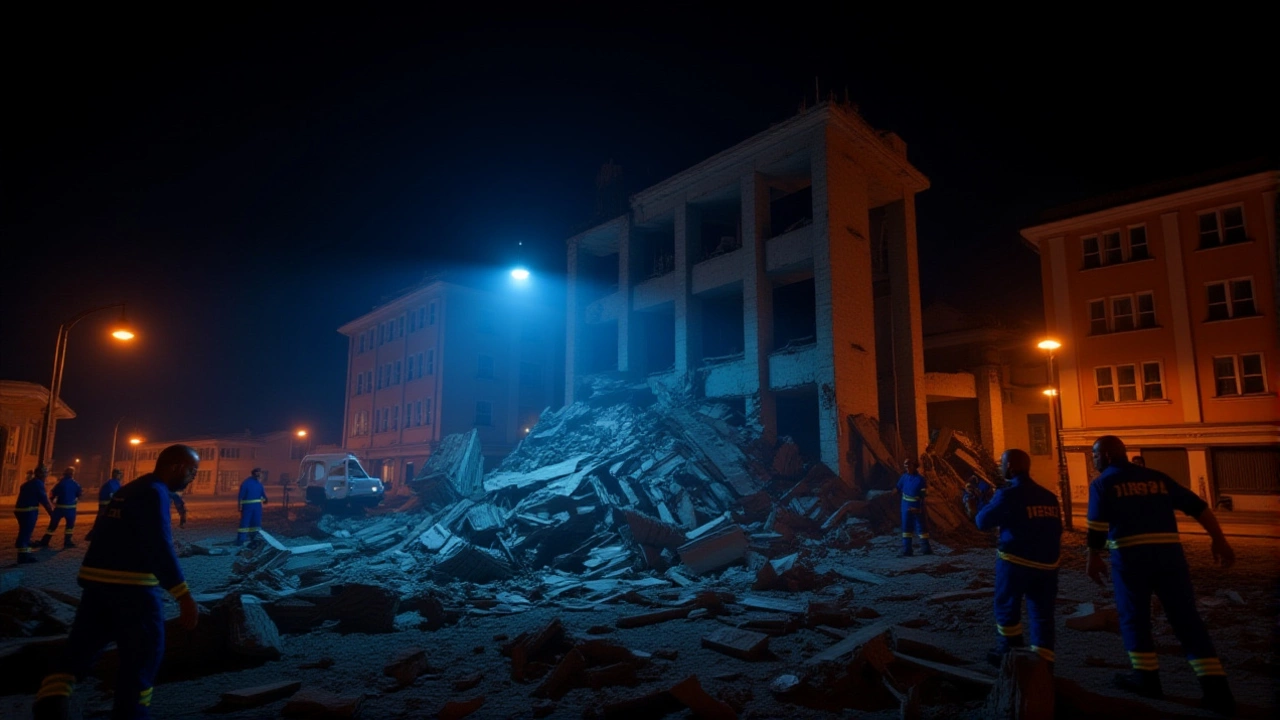When Murat Kurum, Minister of Environment, Urbanization and Climate Change stood before a symposium in Ankara on February 4, 2025, he didn’t just deliver a warning—he sounded an alarm that echoes through every apartment, school, and hospital in Istanbul. The city, home to over 15 million people, is sitting on a ticking time bomb, he said. By 2030, a magnitude 7+ earthquake is likely to rip through the North Anatolian Fault, bringing down nearly 600,000 buildings and leaving millions without shelter. The numbers aren’t guesses. They’re seismological projections, backed by decades of data from the Kandilli Observatory and the United States Geological Survey (USGS). And the buildings? Many were never meant to survive it.
Why Istanbul Is a Seismic Time Bomb
Istanbul isn’t just near the North Anatolian Fault—it’s practically straddling it. This crack in the Earth’s crust has been moving for millions of years, and in the last century, it’s unleashed a series of devastating quakes. The 1999 İzmit earthquake killed over 17,000. The 2023 Hatay quake? 53,725 dead. Now, scientists say the fault is overdue for another rupture, this time directly under the Marmara Sea, just south of Istanbul’s urban sprawl. The Kandilli Observatory has calculated a 65% chance of a magnitude 7+ quake before 2030. By 2075? Nearly certain.What makes this different isn’t just the science—it’s the buildings. One in five homes in Istanbul, roughly 1.5 million structures, are classified as structurally unsound. Of those, 600,000 are so poorly built they’re expected to collapse within minutes of a major tremor. That’s not a worst-case scenario. That’s what the engineering models say. And it’s not just old neighborhoods. Many newer developments, built under the Justice and Development Party (AKP)’s construction amnesty laws, were never inspected properly. Developers paid fines instead of reinforcing walls. Contractors used substandard concrete. Inspectors looked the other way.
The 2023 Quake and the Political Fallout
The February 6, 2023 earthquakes in southern Turkey didn’t just kill tens of thousands—they shattered public trust. Entire towns vanished. Rescue teams dug for weeks, finding bodies under piles of concrete that should’ve never stood. Experts pointed to the AKP’s 2018 and 2020 construction amnesties, which retroactively legalized thousands of unsafe buildings. The government called it economic relief. Critics called it mass negligence.Minister Kurum, once seen as a loyalist to President Recep Tayyip Erdoğan, lost the 2024 Istanbul mayoral race to opposition leader Ekrem İmamoğlu with just 39.5% of the vote. His warning isn’t just technical—it’s political. He’s no longer in office, but he’s still speaking. And the timing? After a magnitude 6.1 earthquake in Balıkesir on October 27, 2025, felt clearly in Istanbul, the public is listening.
Emergency Measures—Too Little, Too Late?
In response, authorities have taken some steps. On August 22, 2025, Istanbul rolled out new tsunami evacuation drills, prompted by UNESCO-backed warnings that a major quake could trigger a 3-meter wave in the Sea of Marmara. On April 24, 2025, the Association of Foreign Special Agents (AFSPA) declared an International Emergency for the city, lasting through May 24. Insurance companies like Aetna and Express Scripts waived requirements for medical and pharmacy services during that window.But here’s the problem: drills don’t rebuild walls. Emergency overrides don’t strengthen foundations. The Global Disaster Alert and Coordination System (GDACS) recorded a magnitude 5 quake in Türkiye on October 2, 2025—minor, but a reminder. The USGS modeled a hypothetical offshore quake: 56,000 people exposed to severe shaking, nearly 800,000 to very strong. Most live in districts like Esenyurt and Büyükçekmece, where buildings are newer but still poorly regulated.

What Happens When the Ground Shakes?
Imagine this: 7:15 a.m. A Tuesday. People are leaving for work. Children are boarding buses. The earth rolls like a wave. Within 13 seconds, buildings that passed inspections on paper begin to pancake. Water pipes burst. Gas lines explode. Hospitals lose power. Emergency services are overwhelmed before they even get the call.That’s not fiction. That’s the scenario experts fear. And it’s not just about death tolls. It’s about economic collapse. Istanbul generates 30% of Turkey’s GDP. A major quake could shutter factories, ports, and financial centers. The cost? Estimates range from $100 billion to $300 billion. The recovery? A decade, if not longer.
What’s Next?
The government says it’s updating building codes. But no new law has been passed since the 2024 elections. The opposition is demanding a national retrofitting program, funded by foreign aid and oil revenues. Seismologists are pushing for mandatory, real-time structural monitoring in high-risk zones. And citizens? They’re forming neighborhood watch groups to inspect their own buildings. One woman in Kadıköy told a reporter: “We don’t trust the state anymore. We’re checking our own stairwells.”There’s still time. But not much. The 2030 deadline isn’t arbitrary. It’s physics. And physics doesn’t care about elections or political slogans.
Frequently Asked Questions
How many buildings in Istanbul are truly earthquake-safe?
Only about 30% of Istanbul’s 5 million residential structures are considered seismically compliant by current standards. The rest—roughly 3.5 million—were built before 2000 or under the AKP’s amnesty laws, which allowed unsafe buildings to remain standing. Even newer constructions often lack proper reinforcement, especially in informal settlements and rapidly developed districts like Esenyurt.
What caused the October 27, 2025, Balıkesir earthquake, and why does it matter to Istanbul?
The magnitude 6.1 quake in Balıkesir occurred along a secondary branch of the North Anatolian Fault, just 200 kilometers west of Istanbul. While not directly on the main rupture zone, it signaled increased stress along the fault line. Seismologists say such quakes are often precursors to larger events. The tremors were felt clearly in Istanbul, reigniting public fear and proving the fault is active and restless.
Why hasn’t the government done more to retrofit buildings?
Cost and politics. Retrofitting 1.5 million buildings would cost over $120 billion—more than Turkey’s annual defense budget. The AKP administration has avoided large-scale mandates, fearing backlash from developers and voters who benefited from construction amnesties. Instead, they’ve relied on voluntary programs, which have reached less than 5% of at-risk structures.
Could a tsunami really hit Istanbul after an earthquake?
Yes. If a major quake occurs offshore in the Sea of Marmara, it could displace enough water to trigger a tsunami. Models suggest waves of 2–4 meters could reach Istanbul’s southern coastline within 20 minutes. Coastal neighborhoods like Arnavutköy and Şile are especially vulnerable. New evacuation routes were added in August 2025, but many residents still don’t know where to go.
What can ordinary citizens do to prepare?
Start with your building: check for cracks in load-bearing walls, weak foundations, or unsupported balconies. Keep an emergency kit with water, medicine, a flashlight, and a battery-powered radio. Know your building’s evacuation plan—or create one with neighbors. Many Istanbul residents are now organizing community drills, especially in high-risk districts like Zeytinburnu and Bayrampaşa, where official help may take hours to arrive.
Is there a chance the earthquake won’t happen by 2030?
The 65% probability isn’t a guarantee—it’s a statistical likelihood based on historical patterns and fault movement. But the North Anatolian Fault has been accumulating strain for over 250 years. The last major rupture near Istanbul was in 1766. Earthquakes don’t follow calendars, but they do follow physics. Waiting for certainty is the most dangerous gamble of all.
